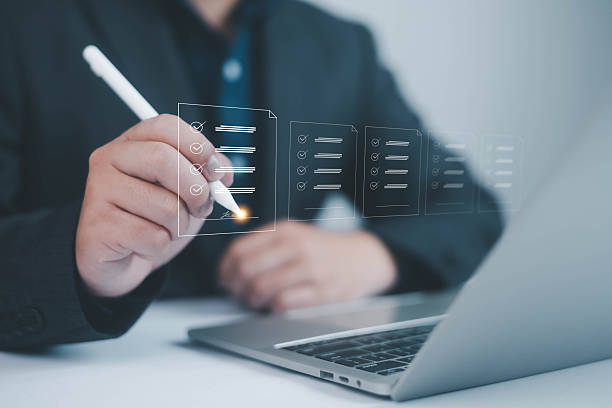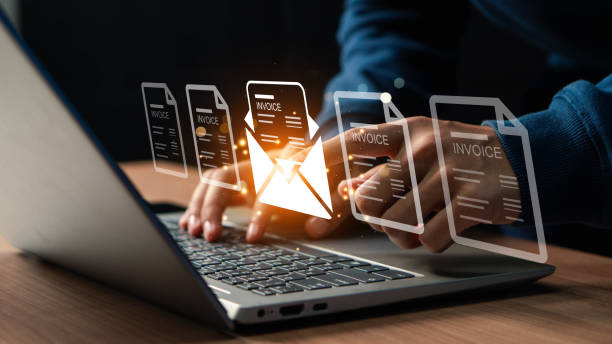Introduction to Internal SEO and Its Importance

Internal SEO or on-page optimization refers to a set of actions and techniques applied to the internal components of a website to improve its ranking in search engine results.
These actions include optimizing content, site structure, keywords, HTML tags, and internal links.
The main goal of Internal SEO is to send clear signals to search engines to better understand the topic and value of web pages.
Without strong Internal SEO, even the best content may never reach the right audience.
It is a fundamental and vital part of the overall SEO strategy, complementing external and technical SEO.
The importance of #Internal_SEO lies in its ability to help search engines like Google correctly index your page and respond to relevant user queries.
This process not only helps improve rankings but also enhances user experience, as optimized content is more engaging and understandable for users.
This is an educational and explanatory discussion that forms the foundation of every successful activity in the digital world.
A precise understanding of this topic is the first step to mastering the art of online visibility.
Without these strong foundations, efforts to attract organic traffic will be fruitless.
Are you tired of losing business opportunities due to lacking a professional corporate website?
Rasweb, with its professional corporate website design, helps you:
✅ Build a powerful and reliable image for your brand
✅ Convert website visitors into loyal customers
⚡ Get a free consultation right now!
Keywords and Advanced Research

Research and selection of appropriate keywords are the backbone of any Internal SEO strategy.
This process goes beyond finding high-volume keywords and involves a deep understanding of User Intent behind the search.
Is the user looking for information (informational search), intending to buy (transactional search), or searching for a specific website (navigational search)? Answering these questions helps you produce content that precisely meets user needs.
Long-tail keywords, which consist of three or more words, often have higher conversion rates and less competition.
For keyword research, various tools such as Google Keyword Planner, Ahrefs, Semrush, and Moz Keyword Explorer can show you search volume, competition level, and related keywords.
Analyzing competitor keywords is also an important analytical approach.
This part of on-page optimization is a specialized step that allows your content to match more precise user searches.
Correct keyword selection is not only vital for your ranking but also ensures that your target audience finds you.
Therefore, spending enough time on this part of Internal SEO will be a high-return investment.
This precise approach is the heart of every successful on-page SEO strategy.
Optimizing Titles and Meta Descriptions

On-page optimization includes crucial elements such as the Title Tag and Meta Description, which form the user’s first encounter with your website in search results.
The title tag is the most important element of Internal SEO and should include the main keyword of the page, being less than 60 characters to be fully displayed.
This tag tells search engines and users what your page is about.
The meta description is also a brief and engaging summary of the page’s content that encourages users to click.
Although meta descriptions do not directly affect rankings, they have a significant impact on the click-through rate (CTR), which is considered an indirect ranking factor.
For both elements, creativity and engaging, entertaining writing are essential to encourage users to click.
Using relevant keywords in the title tag and meta description helps search engines better understand the connection between your content and the user’s search query.
This part of Internal SEO is a practical guide that, if implemented correctly, can drive significant traffic to your site and take the first step in attracting the audience’s attention.
| Internal SEO Element | Importance | Key Optimization Tips |
|---|---|---|
| Title Tag | Most important signal for search engines and users | Includes primary keyword, max 60 characters, engaging and descriptive |
| Meta Description | Increase Click-Through Rate (CTR) | Engaging summary, includes keyword, max 155 characters, encourages clicks |
| Heading Tags (H1-H6) | Content structuring, better readability | H1 for main title, logical use of other tags, includes keywords |
| Internal Links | Improve page ranking power, user experience | Link to relevant and important pages, use relevant anchor texts |
URL Structure and Rich Content
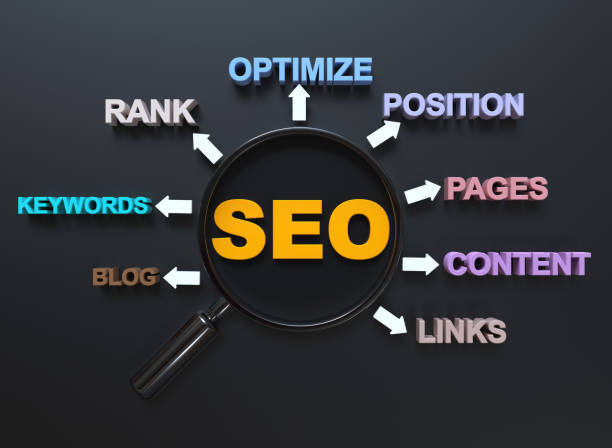
The URL structure of web pages is another important factor in Internal SEO that is often overlooked.
A URL should be short, descriptive, include keywords, and be readable for both humans and search engines.
Avoiding complex characters, meaningless numbers, and long parameters helps in better understanding the page’s topic and can also improve the click-through rate.
For example, a good URL looks like this: `example.com/blog/sefr-ta-sad-seo-dakheli`.
This approach greatly assists on-page optimization.
However, the heart of Internal SEO is rich and high-quality content.
Content that provides comprehensive, accurate, and unique information.
Search engines look for content that best fulfills users’ needs.
This means producing content that doesn’t just stuff keywords, but content that has depth and addresses all aspects of the topic.
The concept of E-A-T (Expertise, Authoritativeness, Trustworthiness) and more recently E-E-A-T (Experience, Expertise, Authoritativeness, Trustworthiness), emphasized by Google, highlights the importance of quality content and expert authors.
Your content should demonstrate expertise, authority, and trustworthiness.
This section provides a deep explanatory and analytical look into the nature of content that leads to successful on-page SEO.
Regular updates and adding new information to existing content are also signs of dynamism and quality.
Did you know that 85% of customers check your company’s website before any interaction?
With Rasweb, build a corporate website worthy of your credibility.
✅ Increase customer credibility and trust
✅ Attract high-quality leads
⚡ Get a free website design consultation
Optimizing Images and Multimedia Files
![]()
Images and multimedia files like videos and infographics play an important role in Internal SEO and user experience.
Optimizing these elements can help improve rankings and increase user engagement.
The most important aspect of image optimization is the use of the Alt tag (alternative text).
The Alt tag should provide a brief and accurate description of the image content and include a relevant keyword.
This not only helps search engines understand the image but is also beneficial for visually impaired users and when the image fails to load.
Compressing images to reduce file size without significant loss of quality is another essential measure.
Page loading speed is a crucial ranking factor, and high-volume images can severely slow down a website.
Next-generation image formats like WebP can also help reduce size.
For videos, using compressed files, adding subtitles and transcripts, as well as optimizing video titles and descriptions on platforms like YouTube or on your own website, are of great importance.
This is an explanatory and specialized guide for the optimal use of visual elements in your Internal SEO strategy.
Rich and optimized visual content not only enhances the page’s aesthetic appeal but also aids search engines in better understanding the topic and keeps users more engaged.
Internal Linking and User Experience Improvement
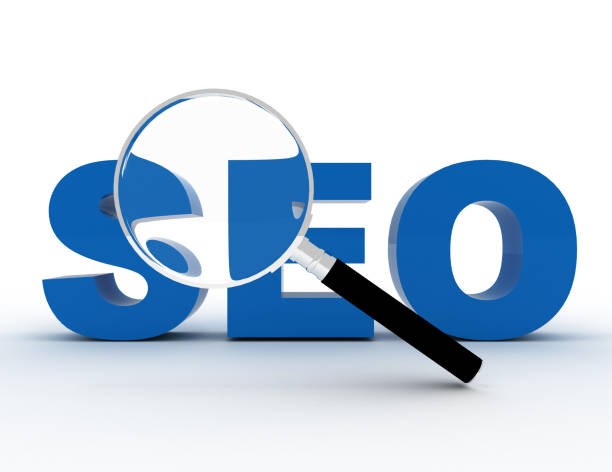
Internal linking is one of the most powerful tools in Internal SEO that helps improve site structure, distribute Link Equity, and enhance user experience (UX).
By creating relevant links from authoritative pages to less authoritative (or more important) pages, you can show search engines which pages are of greater importance to you.
Anchor Text, or the clickable text of the link, should also be relevant and include keywords to help search engines understand the content of the destination page.
In addition to SEO, internal linking plays a vital role in improving UX.
A logical and intuitive internal link structure allows users to easily navigate your website and access the information they need.
This means reducing the Bounce Rate and increasing Dwell Time, both of which are considered positive signals for search engines.
Optimizing user experience includes responsive design, content readability, easy navigation, and clear calls to action (CTA).
This section is a comprehensive guide and thought-provoking content that demonstrates how the link between SEO and user experience leads to the success of on-page SEO.
A site with an excellent user experience encourages users to stay longer and explore other pages, which directly contributes to better rankings in search results.
Loading Speed and Mobile Compatibility
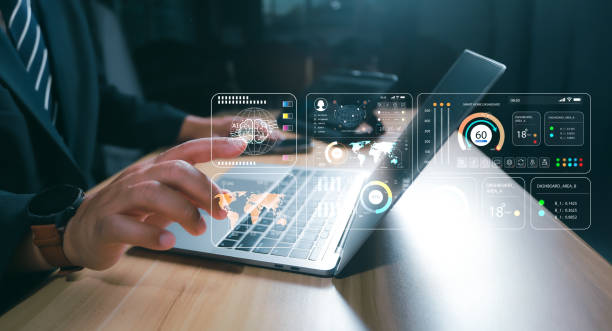
Page loading speed and mobile compatibility are two specialized and very important factors in modern Internal SEO.
Google has considered loading speed a direct ranking factor for years, and with the introduction of Core Web Vitals, its importance has doubled.
These core metrics include LCP (Largest Contentful Paint) for main content loading speed, FID (First Input Delay) for page responsiveness, and CLS (Cumulative Layout Shift) for visual stability.
Optimizing these metrics is crucial for any website seeking high rankings and an optimal user experience.
Tools like Google PageSpeed Insights help you evaluate your site’s speed and identify improvement solutions.
In addition to speed, mobile compatibility is also highly important.
Given the increasing use of mobile devices for searching, Google has implemented the “Mobile-first Indexing” algorithm since 2018, meaning it prioritizes the mobile version of your site for indexing and ranking.
Responsive design, which optimizes your site for various screen sizes, is essential.
This section is an informative and explanatory guide showing how these technical factors impact your Internal SEO success.
Ignoring these two factors can severely harm your rankings.
| Technical/Internal SEO Factor | Why is it important? | Improvement Solution |
|---|---|---|
| Loading Speed (Core Web Vitals) | Direct ranking factor, better user experience | Image compression, caching, code optimization, CDN usage |
| Mobile Compatibility (Mobile-first) | Google’s primary priority for indexing and ranking | Responsive design, testing on various devices, ensuring font readability and element size |
| Site Security (HTTPS) | Ranking factor, user trust | Using SSL certificate, ensuring correct redirects |
| Schema Markup | Richer display in search results | Adding schema to products, articles, reviews, etc. |
Schema Markup and Structured Data
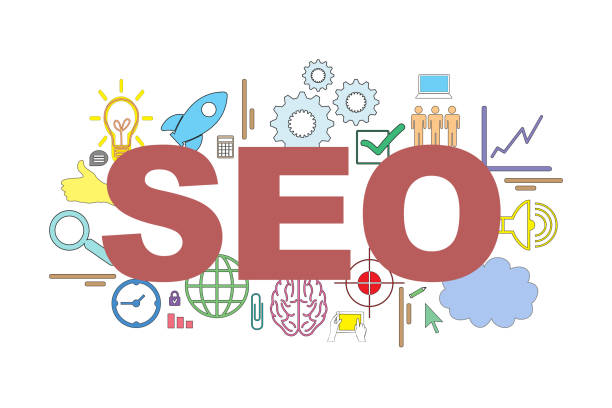
Schema Markup, or structured data, are semantic codes added to your website to help search engines better understand your content.
These codes provide specific information about the page content (such as article type, product, event, customer reviews, etc.) to search engines.
Correct use of Schema Markup can lead to the display of Rich Snippets in search results, which include additional information like star ratings, prices, dates, and images.
This richer display attracts user attention and significantly increases the click-through rate (CTR), even if your ranking doesn’t change.
Implementing Schema Markup is a specialized and advanced step in Internal SEO.
For example, an e-commerce website can use schema to display prices, availability, and customer reviews in search results.
A news website can specify the article type, author, and publication date.
This structured data helps Google accurately identify the nature of your information and display it to users in the best possible way.
Tools like Google’s Structured Data Markup Helper can assist you in this process.
This is an explanatory and vital section for improving your website’s visibility in search results and is considered an inseparable part of on-page optimization.
Understanding and implementing this technique puts your site one step ahead of competitors.
Did you know that poor online store design can drive away up to 70% of your potential customers? Rasweb transforms your sales with professional and user-friendly e-commerce website designs.
✅ Significant increase in sales and revenue
✅ Full optimization for search engines and mobile
⚡ [Get a free consultation from Rasweb]
Monitoring and Analyzing Internal SEO Performance

After implementing Internal SEO changes, continuous performance monitoring and analysis are crucial to ensure the effectiveness of your strategy.
Without precise tracking, you cannot identify strengths and weaknesses and make the necessary optimizations.
Key tools for this purpose are Google Analytics and Google Search Console.
Google Analytics allows you to monitor incoming traffic, user behavior on the site, bounce rate, dwell time, and conversion paths.
This data shows you how users interact with your content and whether your Internal SEO goals have been met.
Google Search Console is an essential tool for direct communication with Google.
This tool provides you with information about the keywords your site is visible for, indexing issues, site errors, and Core Web Vitals performance.
Monitoring keyword rankings, observing the number of clicks and impressions, and checking the click-through rate in search results are all vital for an analytical evaluation of your on-page SEO strategy.
You can also use third-party tools like Ahrefs or Semrush to track rankings, analyze competitors, and identify new opportunities.
This is an informative and data-driven approach that helps you stay informed about your website’s performance and implement necessary changes for continuous improvement.
The Future of Internal SEO and New Trends
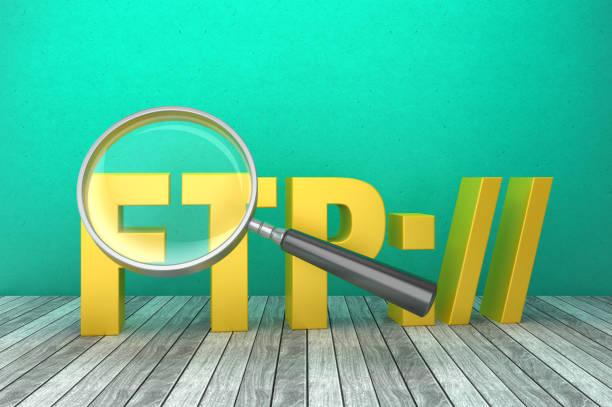
The world of SEO is constantly changing, and Internal SEO is no exception.
New trends indicate that search engines are increasingly focusing on understanding content meaning and the user’s true search intent.
Artificial intelligence and machine learning play a more prominent role in ranking algorithms, which means your content should be optimized not just for keywords, but for “topics.”
Optimization for voice search is also on the rise, typically involving longer keywords and more natural language.
This is an entertaining and thought-provoking content discussing the future direction of on-page optimization.
Furthermore, the emphasis on E-E-A-T (Experience, Expertise, Authoritativeness, and Trustworthiness) will continue.
Producing content written by experienced and expert individuals that provides reliable and accurate information will become even more important in the future.
This includes displaying author information, reputable sources, and personal experience.
User Engagement, such as dwell time on site, bounce rate, and scroll depth, will also be important signals for search engines.
Therefore, the future of Internal SEO is moving towards a focus on quality, semantic relevance, and actual user experience.
Continuous adaptation to these changes and updating your on-page SEO strategy is key to sustained success in the online search environment.
This requires thinking beyond keywords and focusing on the true value provided to the user.
Frequently Asked Questions
| No. | Question | Answer |
|---|---|---|
| 1 | What is Internal SEO (On-Page SEO)? | Internal SEO refers to a set of actions performed within a website to optimize its pages to achieve a better ranking in search results. |
| 2 | What is the most important factor in Internal SEO? | High-quality, relevant, and comprehensive content that addresses user needs is the most important factor in Internal SEO. |
| 3 | What role does the Title Tag play in Internal SEO? | The title tag is one of the most important factors that tells search engines and users what the page content is about. It should include the main keyword and be engaging. |
| 4 | How important is the Meta Description tag? | Although it does not directly affect rankings, it is very effective on the click-through rate (CTR) in search results and encourages users to visit the page. |
| 5 | How is image optimization done in Internal SEO? | By using appropriate alt tags, compressing image file size to increase loading speed, and meaningful image file naming. |
| 6 | What is the importance of using headings (H1, H2, H3) in Internal SEO? | Headings help structure content, improve readability, and assist search engines in understanding the hierarchy and sub-topics of the content. |
| 7 | What does Internal Linking mean and what are its benefits? | Internal linking means creating links between different pages of a website. This helps in distributing authority, improving user navigation, and assisting search engine crawling. |
| 8 | Where should the Focus Keyword be placed on the page? | The main keyword should be placed in the title tag, meta description, H1, first paragraph, and naturally throughout the text and, if possible, in the URL. |
| 9 | What impact does copied or duplicate content have on Internal SEO? | Duplicate content can harm a site’s ranking and confuse search engines as to which version is original, potentially leading them to flag it as spam. |
| 10 | How important is page loading speed in Internal SEO? | Page loading speed is an important ranking factor and directly impacts user experience. Slow pages lead to an increased bounce rate. |
And other services of Rasweb Advertising Agency in the field of advertising
Smart Digital Advertising: Designed for businesses seeking campaign management through precise audience targeting.
Smart Advertising Campaign: Revolutionize customer acquisition by optimizing key pages.
Smart Conversion Rate Optimization: An innovative platform to improve website traffic increase by customizing user experience.
Smart Advertorial: A professional solution for increasing sales with a focus on precise audience targeting.
Smart Google Ads: A fast and efficient solution for increasing click-through rate with a focus on using real data.
And over hundreds of other services in the field of internet advertising, advertising consultation, and organizational solutions
Internet Advertising | Advertising Strategy | Advertorial
Resources
Complete Guide to Internal SEOWhat is On-Page Optimization?Internal SEO Articles and TechniquesOn-Page SEO Checklist
? Are you ready to transform your business in the digital world? Rasweb Afarin Digital Marketing Agency offers innovative and specialized solutions, including fast website design and professional optimization, to help you grow and succeed. For a powerful online presence and attracting more customers, contact us today.
📍 Tehran, Mirdamad Street, next to Central Bank, Southern Kazeroun Alley, Ramin Alley, No. 6


